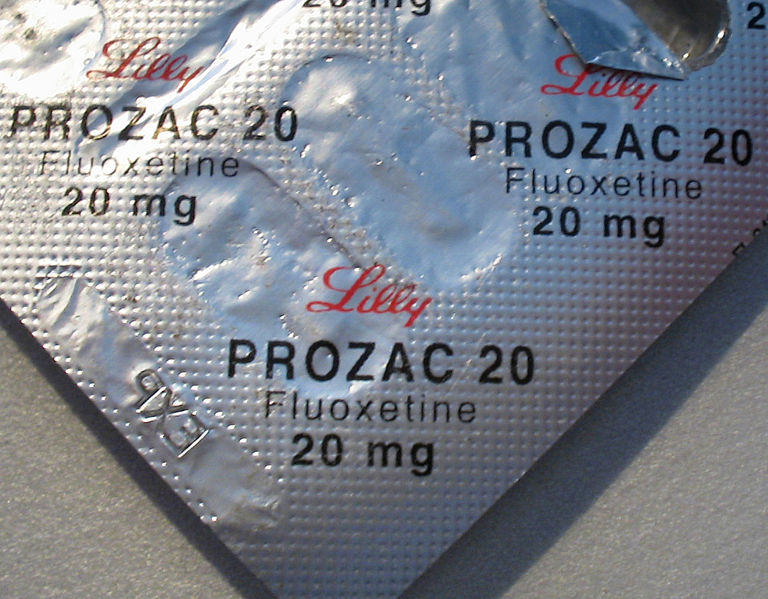
Could raising our body temperature treat depression?
Hyperthermia could be more effective than anti-depressants, with fewer side effects
Major depressive disorder affects nearly 16 million Americans a year, including me. Like many other Americans, I have been advised by a doctor to follow a routine of psychotherapy and medicine, which together are referred to as the most effective treatment for major depressive disorder.
Unfortunately, effective doesn’t also mean good, in my and many other scientists’ opinion. The lengthy side effect lists, the black box warnings - the strictest FDA warning that can be given, which in this case references the risk of suicide when taking an anti-depressant – and the need for an entire separate diagnosis of treatment-resistant depression makes me wonder if we can do better.

One of the most common antidepressants
Not to say that medicine is not an important tool in treating depression, as many have found relief that way. Currently, around one in 10 Americans are taking SSRIs, or serotonin selective re-uptake inhibitors, the gold standard drug to treat depression and anxiety disorders. Yet pushback from the scientific community and users of these drugs over the negative effects is mounting. Just this year, a review of 131 clinical trials using SSRIs totally questioned their clinical relevance and suggested their net effect was more harmful than helpful.
With future drug development in psychiatry creeping along and being described by our brightest research minds as a daunting task, it seems appropriate to look to other tools to build a more efficacious treatment for major depressive disorder and other mental illnesses.
Interestingly enough, that better treatment may just be as simple as heating yourself up.
A collaborative effort, led by psychiatrist Clemens Janssen at University of Wisconsin–Madison, piloted the first ever double blind clinical trial to try and show that hyperthermia can relieve symptoms of major depressive disorder better than SRRIs can – and that it can do so without any of the dreadful side effects like extreme weight gain, panic attacks, suicide attempts, insomnia, or sexual dysfunction that can accompany those drugs. At most, patients experiencing mild hyperthermia treatments experience dehydration, nausea, and headaches. The results sound too good to be true.
The study enrolled men and women ages 18 to 65 who had major depressive disorder for at least four weeks prior to joining. None of the participants were receiving pharmaceutical treatments during the study, and they were also asked to take the Hamilton Depression Rating Scale, a questionnaire used to standardize and understand the severity of the individual’s depression across multiple time points in the study. In total, 16 participants underwent treatment and 14 underwent a control treatment that mimicked the effects without duplicating them.
To induce whole-body hyperthermia, the 16 participants laid down in a device that covered and isolated their bodies from the neck down. Inside the chamber, infrared lights aimed at their chest and legs heated their body to 38.5°C (101.3°F). It took 107 minutes, on average, to increase core body temperature to this target, and then the heating machinery was turned off and a 60 minute cool-down period was initiated. For the control group, all conditions were the same, except a heat fan was used to warm participants, so they thought they were receiving an active treatment. That group’s body temperatures were only increased to 99 degrees Fahrenheit, significantly lower than the hyperthermia group.

Perhaps an outdated model
Following the procedure, each group was asked if they they believed to have received that active treatment or the sham one. For the control group, 71.4 percent of the participants thought they received the active treatment, whereas 93.8 percent of the patients that actually received whole-body hyperthermia guessed right. Each group was then asked to take the Hamilton Depression Rating Scale one, two, four, and six weeks after the treatment.
The group that received whole-body hyperthermia had an average decrease of 6.53 points in the Hamilton Depression Rating Scale one week after treatment compared to the control group. At six weeks, the average comparative decrease was 4.27. The effect size, a measure that shows how well the treatment worked, was 1.66 after six weeks. For reference, the best anti-depressant medications usually show a decrease of three to four points on the Hamilton Depression Rating Scale, and their effect size is usually about 0.35. This suggests that hyperthermia treatments could be four times as effective as the average drug.
Early reactions to the paper have been extremely skeptical. Researchers suggested the statistics were off – and they were, due to a statistical error in the analysis. But even after corrections the claims still hold true.Critics also easily point out that the sample size was too small. It is, but other groups have begun to replicate this data in newer studies and are seeing similar results.
As the study holds up against scrutiny, it becomes more convincing that this may not be too good to be true – that hyperthermia may become the best clinically validated treatment to help those who suffer from major depressive disorder.
Admittedly, I find joy in the ripple effect that this study and others have started to create and sustain in psychiatric disease research, which suggests that medicinal treatments for depression and anxiety may not be as effective as drug-free procedural treatments. Recently, some interesting data has shown that core body temperature increases leads to modulation of the same neural circuits that SSRIs act on, the most compelling piece of data that argues against the placebo effect explaining this whole thing.
It seems unorthodox and even illogical at first glance, but when the data aligns with the treatments, it's exciting to see how simple and safe some of the solutions to our biggest problems can be.




This reminds me of the saunas and banyas (bathhouses warmed up to extremely high temperatures, 170°F and above) that have enormous cultural value in northern countries (Finland, the Baltics, Russia). Incidentally, northern populations also have higher rates of seasonal affective disorder and depression. Of course, correlation is not equal to causation, but I wonder if this is where authors got an idea for the study from. If their results hold up it might potentially explain the science behind a centuries-old tradition.